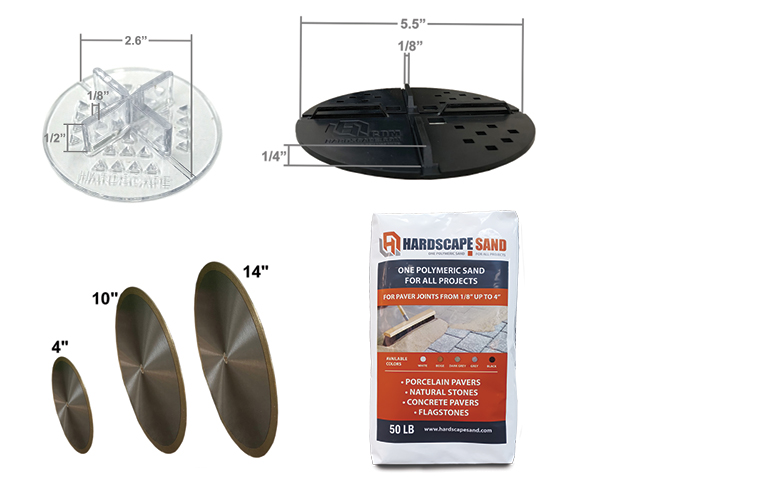
Our permanent spacers come in two sizes to accommodate varying installation conditions: a 2.6″ diameter model for use with the standard sand substrate in non-freeze-thaw regions, and a larger 5.5″ diameter model designed for freeze-thaw regions with the typical rock substrate. These spacers can also be utilized in wet installations, however, our porcelain pavers are primarily designed for dry-lay installations, reflecting our core market focus.
An extensive development and rigorous testing of various prototypes has led to these optimally designed spacers. The material used and the design details facilitate easy breakage of the tabs to achieve the desired pattern, leaving a consistent 1/8″ gap. This results in uniform lines throughout the installation, contributing to a visually pleasing and structurally sound end result. These spacers represent a well-fitted solution for a diverse range of substrate applications, ensuring the success of each installation.
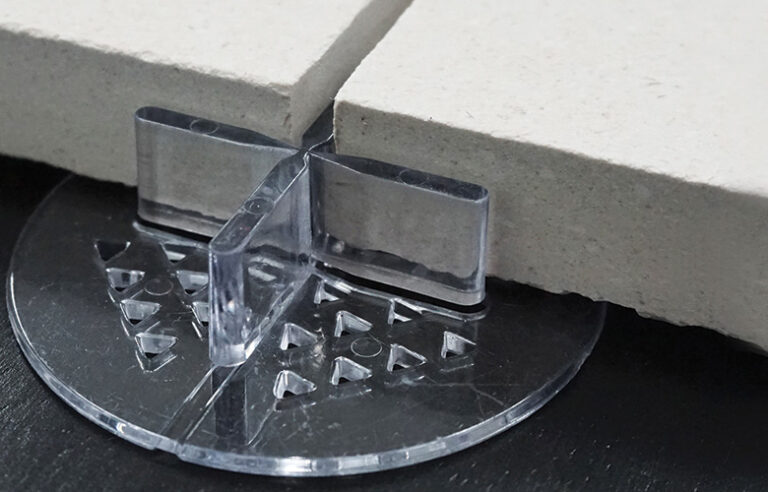
The borders must be completely set in a mortar bed, or ‘mud-set’, with a permanent spacer inserted between the border and the field cut piece. This important step ensures that the pavers are properly aligned and that the installation maintains its structural integrity over time.
Years of hands-on testing and development have led us to design a fail-proof system, where the borders play a significant role, especially for driveway installations. An alternative solution is the use of the Fortress StrypRail Geo-Tension Restraint System. This system serves as a reliable alternative for installations where a conventional mud-set border may not be suitable. You can find more information here.
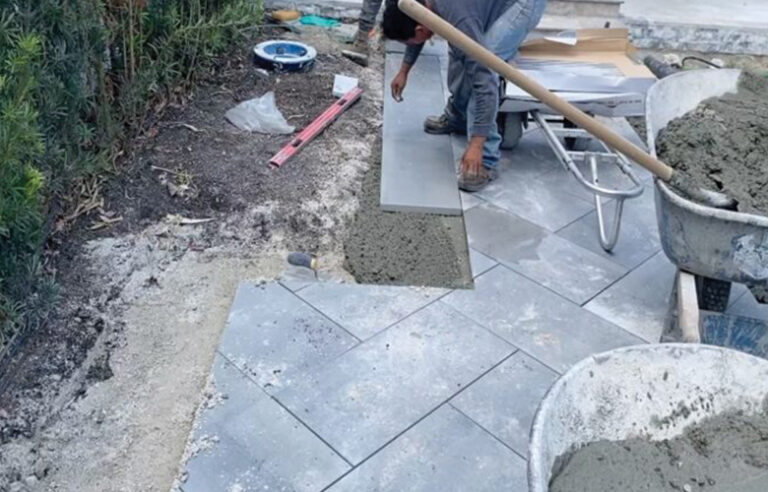
In a dry-lay system, the application of Polymeric Sand is an essential step throughout the installation process. This special type of sand plays a vital role in binding the pavers together, contributing to the strength and longevity of the overall installation.
The application of Polymeric Sand is followed by a process of machine compaction, with the frequency depending on the product thickness: twice for 2CM products and three times for 3CM products. This compaction helps the sand settle and interlock, creating a firm and stable base.
Once this stage is complete, the Polymeric Sand is activated with water, a step that solidifies the sand, locks the pavers in place, and marks the completion of the job. This systematic procedure ensures a successful and durable dry-lay installation.
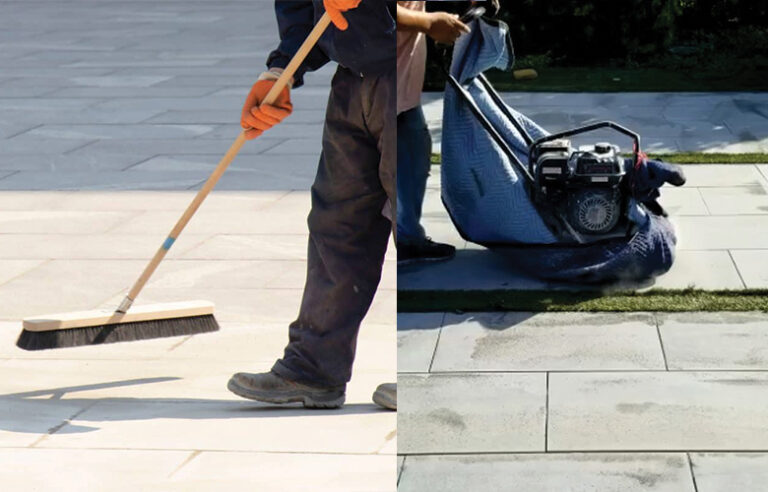
When working with porcelain pavers, it’s crucial to use the right tools for the job to maintain the integrity and aesthetics of the product. Rather than utilizing a segmental blade, which might not provide a clean and precise cut, a continuous Diamond Blade must be used. The Diamond Blade, renowned for its durability and precision, allows for a smoother and more accurate cut, ensuring the perfect fit and finish of the pavers.
In addition to the correct blade, water usage is essential when cutting porcelain pavers. The water serves to cool down the blade and the paver during the cutting process, preventing potential damage from overheating.
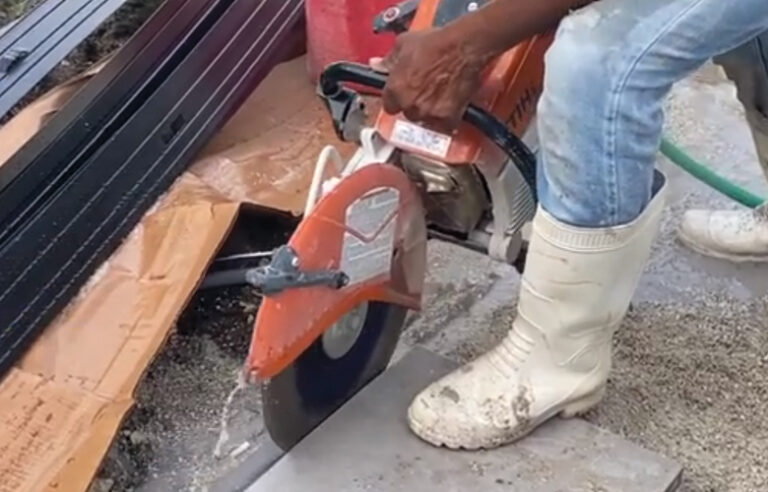
Now that your outdoor hardscape project is complete, it’s important to ensure that it remains in optimal condition.
To help you maintain the new look of your outdoor area, we have a few essential tips. Firstly, we recommend taking photographs of your completed project. These images can be useful for homeowner’s insurance purposes and also provide a visual record to track the longevity and durability of our product over time.
Once approved, your permit should be duly closed with your municipality, a critical step if you plan to sell your home in the future. Rest assured, we take pride in offering the highest quality outdoor hardscape products to our valued customers.
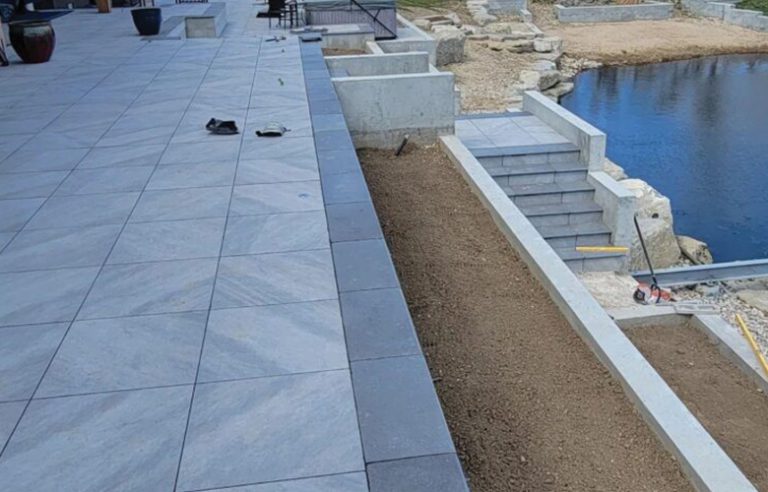
Proper care and maintenance are key to ensuring the longevity of your outdoor hardscape materials.
During the manufacturing process, our porcelain pavers are naturally endowed with qualities that make them resistant to stains, frost, and the growth of mold, moss, and mildew. This means they are highly unlikely to succumb to permanent staining, maintaining their visual appeal over time.
Superficial stains can be easily cleaned using soap and water, a testament to the user-friendly nature of our pavers. Owing to their minimal absorption rate of only 0.3%, the application of a paver sealant is not necessary. This characteristic further simplifies the maintenance routine and reduces the overall upkeep cost, adding to the many benefits of choosing our porcelain pavers for your outdoor hardscape projects.
Visit our Maintenance page to know the cleaning products we recommend for professional use.
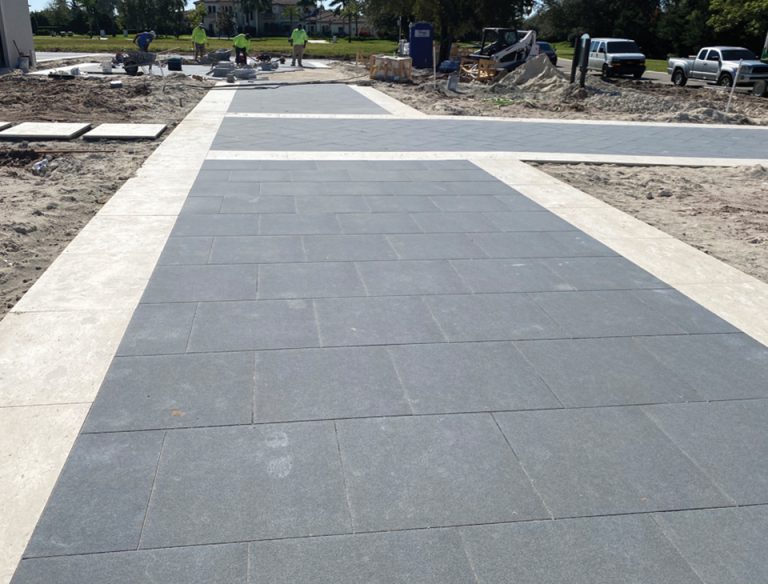
"*" indicates required fields